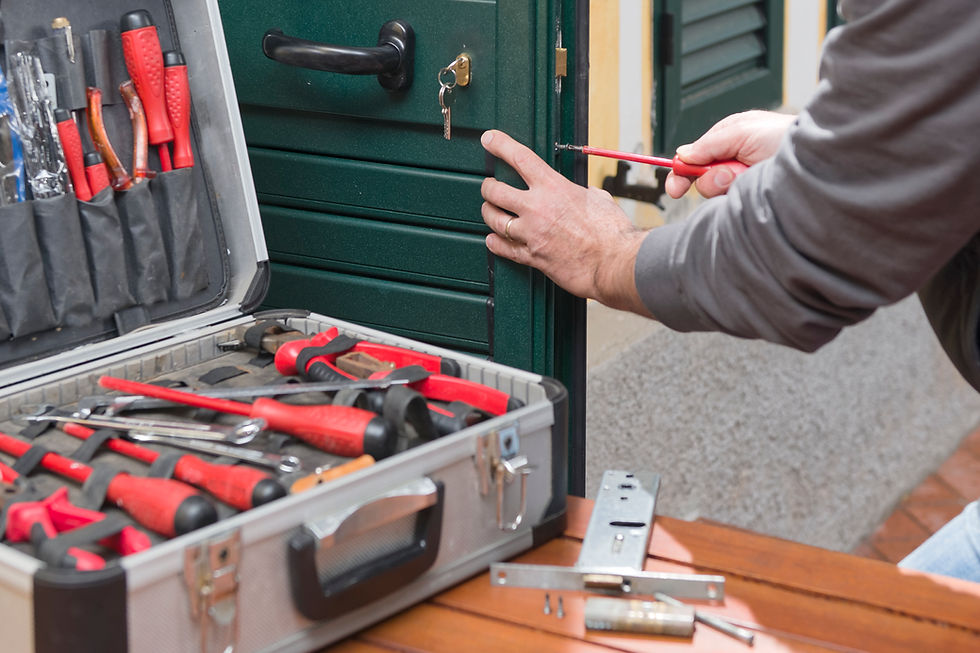Common Tool Maintenance Mistakes
- The Tool Pro

- Feb 6
- 3 min read

Keeping your tools in good working condition is essential for productivity, safety and a better overall project outcome. However, common tool maintenance mistakes can shorten the lifespan of your tools and impact their performance. Here are five common tool maintenance mistakes and tips on how to avoid them.
Many tools are exposed to extremes. Heat, speed, vibration. impacts and other forces. Not taking care of tools will guarantee that you have to prematurely replace them and leaves the potential for safety risks.
Neglecting Regular Cleaning
The Mistake: Allowing dirt, dust, and debris to accumulate on and inside your tools can lead to reduced efficiency, corrosion, or even complete failure.
How to Avoid It: After every use, take a few minutes to wipe down your tools with a clean, dry cloth. For power tools, use compressed air to clear out vents and crevices. Regular cleaning ensures that grime doesn’t have a chance to damage moving parts. This is the most common mistake and can be easily prevented by allowing time to do it.
The Proferred Hand and Tool Wipes are an excellent solution to remove dust and debris from your tools.
Skipping Lubrication
The Mistake: Ignoring lubrication needs can cause moving parts to wear out prematurely due to friction and heat.
How to Avoid It: Check your tool’s manual for lubrication recommendations. Apply oil or grease as specified, particularly to joints, gears, and moving mechanisms. Using the right lubricant for the job is crucial—don’t substitute with general-purpose oils if a specific type is recommended. The wrong lubricants may also break down gaskets, bushings or other rubberized seals that could lead to breakdown of the material.
3-IN-ONE Multi-Pupose Tool Oil is a must have lubricant in your workshop. buy yourself a bottle and it will last you a long time and keep your tools lubricated.
Improper Storage
The Mistake: Leaving tools exposed to moisture, extreme temperatures, or disorganized piles can lead to rust, damage, and difficulty finding them when needed.
How to Avoid It: Store tools in a clean, dry space like a toolbox, pegboard, or dedicated cabinet. For hand tools, consider silica gel packs to reduce moisture. Invest in cases or covers for power tools to protect them from dust and accidental damage. With the amount of storage solutions out there, you are bound to find one that suits your workshop best.
Using Dull or Worn Parts
The Mistake: Continuing to use dull blades, bits, or other worn-out parts can damage your tools and make your tasks more difficult. Dull blades also typically require more force to use which puts the operator at a higher risk of injury. Blades are stressed under this pressure and can lead to the tool not acting as expected.
How to Avoid It: Regularly inspect and sharpen blades, chisels, drill bits, and cutting edges. Replace parts when sharpening isn’t sufficient or when they show significant wear. Keeping spare parts on hand can save time and prevent further damage.
Ignoring Warning Signs
The Mistake: Overlooking strange noises, vibrations, or reduced performance often leads to bigger problems later. Pushing tools beyond their limits or reccomenations also lead to this occuring.
How to Avoid It: Address issues as soon as they arise. If a power tool feels sluggish or overheats, stop using it and check for problems like clogged filters or worn brushes. For hand tools, check for loose handles or signs of stress. Early intervention can prevent costly repairs or replacements.
Bonus Tip: Use tools for their designend purpose. Tools make a significant diffence in our lives and make some of the most difficult tasks much easier to complete. Using tools for something other than its intended purpose has the potential to damage the tool and/or the operator. Take care of your tools and they will take care of you.
Tool maintenance doesn’t have to be complicated. With a little attention to cleaning, lubrication, storage, and part replacement, you can extend the life of your tools and ensure they perform at their best. Stay proactive and treat maintenance as an essential part of using your tools—you’ll thank yourself in the long run!
Let us know your go-to tool maintenance tips in the comments below!
the Tool Pro

Comments